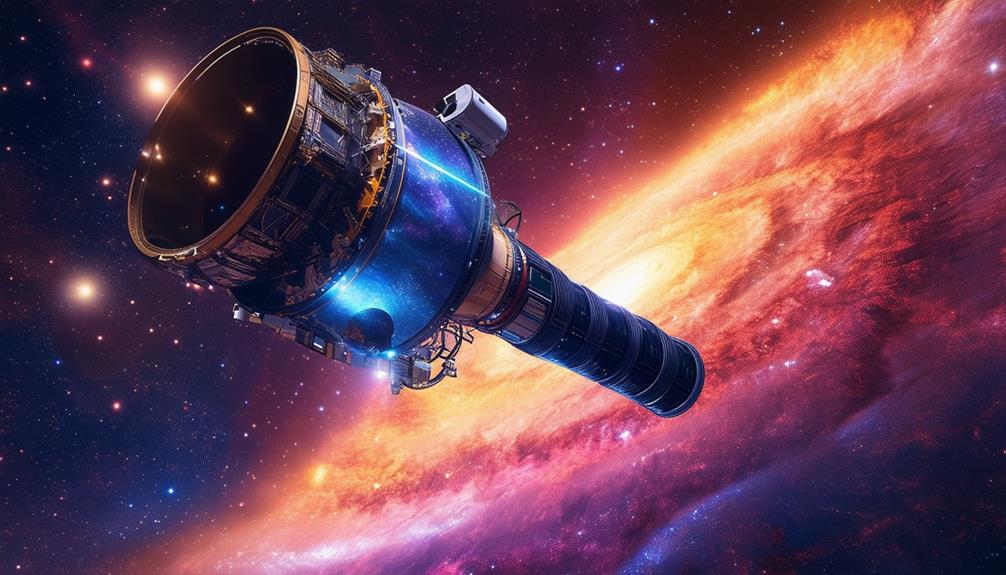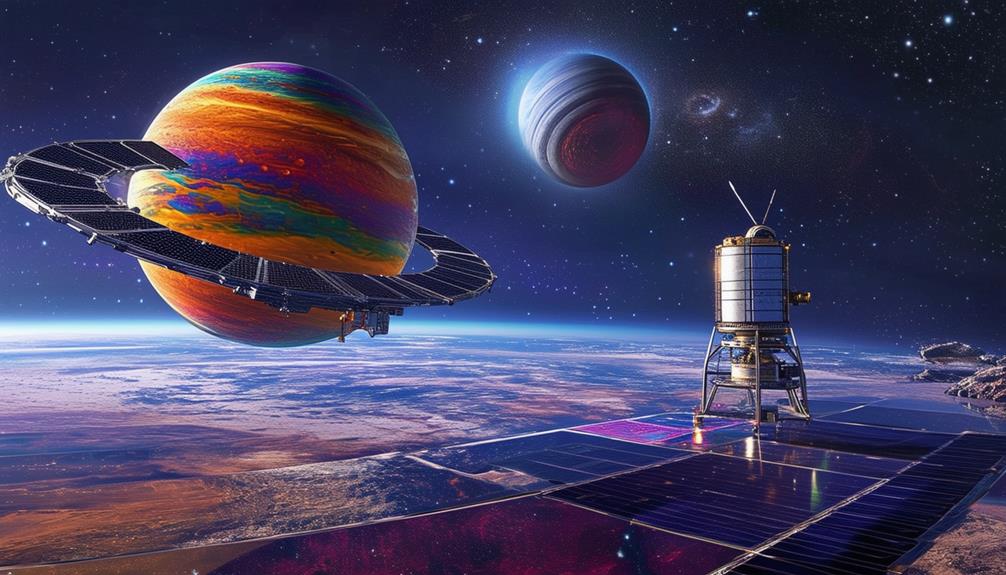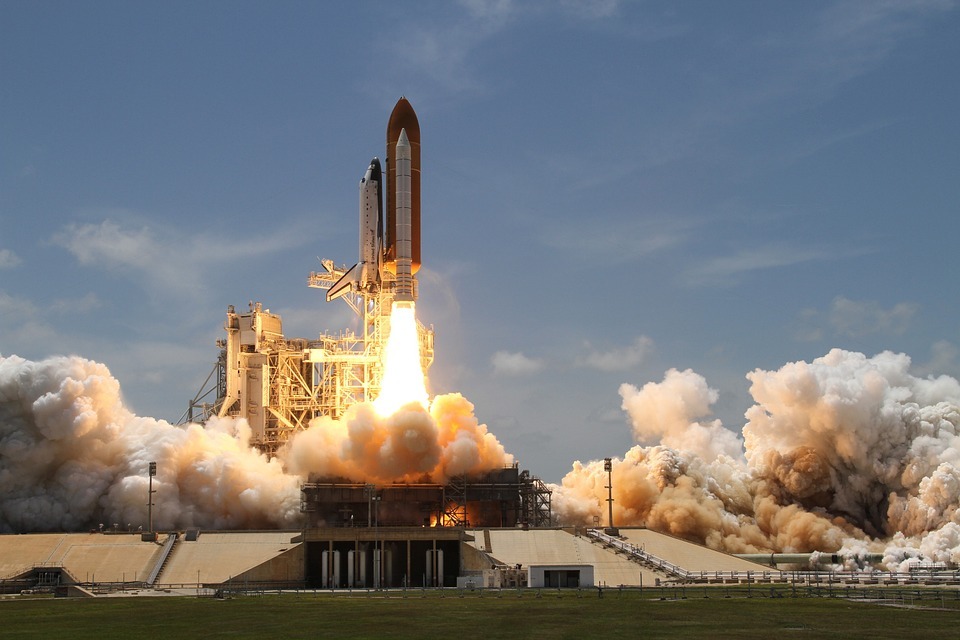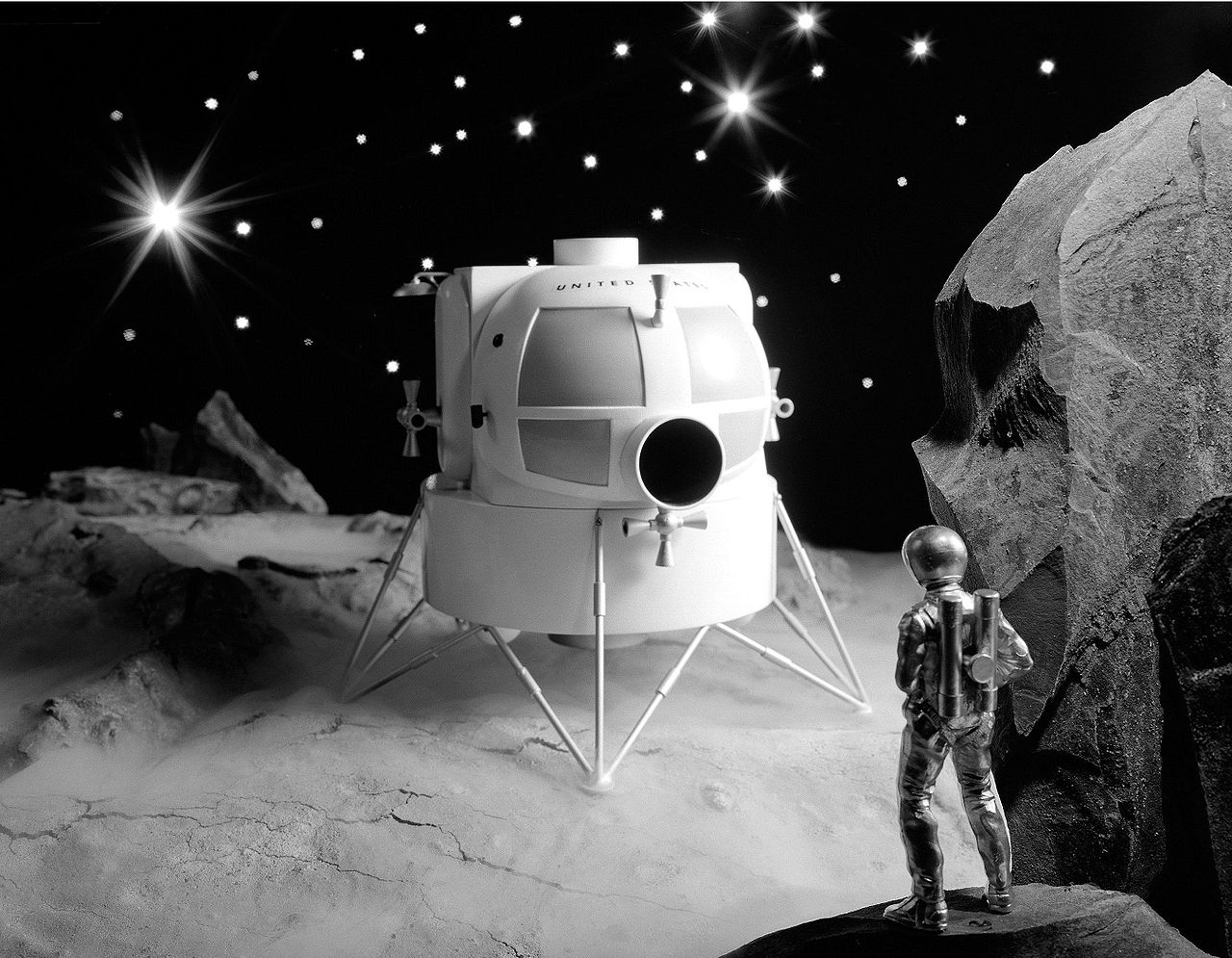The Role of Space Telescopes in Exoplanet Discovery

Space telescopes are crucial tools in the discovery of exoplanets, providing astronomers with clear, unobstructed views of distant planetary systems by circumventing Earth's atmospheric distortions.
Instruments like the Hubble, Kepler, and Spitzer telescopes have significantly advanced our understanding by offering detailed insights into the atmospheres and compositions of exoplanets.
The James Webb Space Telescope promises even more groundbreaking discoveries. But what makes these telescopes so effective, and how do they work together to broaden our cosmic knowledge?
Importance of Space Telescopes
Space telescopes eliminate atmospheric interference, enabling precise observations of exoplanets beyond the capabilities of ground-based telescopes. Instruments like the James Webb Space Telescope, Hubble Space Telescope, Spitzer Space Telescope, Kepler Space Telescope, and the Transiting Exoplanet Survey Satellite (TESS) have revolutionized our understanding of exoplanet atmospheres. These space-based observatories are essential for detecting distant planets and delivering detailed data that ground-based telescopes can't achieve due to atmospheric distortion.
The James Webb Space Telescope, with its advanced infrared capabilities, provides unparalleled insights into exoplanet atmospheres' composition. Similarly, the Hubble Space Telescope has been crucial in analyzing atmospheric composition through its ultraviolet and optical instruments. The retired Spitzer Space Telescope offered vital infrared observations that complemented findings from other space telescopes.
Kepler and TESS have been particularly significant in exoplanet exploration, identifying thousands of potential exoplanets by monitoring stellar brightness for transits. These discoveries have laid the groundwork for further investigation by more advanced telescopes like Webb.
Historic Contributions and Legacy
Space telescopes such as Hubble, Kepler, and Spitzer have profoundly impacted exoplanet research.
Hubble's pioneering work on exoplanet atmospheres, Kepler's discovery of over 2,600 exoplanets, and Spitzer's infrared observations have each significantly advanced our understanding of distant worlds.
These contributions underscore the essential roles these telescopes have played in expanding our knowledge of the universe.
Hubble's Pioneering Exoplanet Research
Hubble's groundbreaking research in exoplanet atmospheres has revolutionized our understanding of distant worlds. Celebrating its 30th anniversary in 2020, the Hubble Space Telescope has played a pioneering role in exoplanet exploration. By providing crucial data on exoplanet characteristics and atmospheric compositions, Hubble's observations have significantly advanced our knowledge.
Hubble's contributions can be summarized as follows:
- Pioneering Role: Hubble was the first telescope to study exoplanet atmospheres in detail, setting the stage for future research.
- Crucial Data: Its observations have revealed important information about the compositions of exoplanet atmospheres, including the presence of elements like water vapor and carbon dioxide.
- Groundbreaking Discoveries: Hubble has identified atmospheres of 'hot Jupiters' and detected hazes and clouds on distant exoplanets.
- Diverse Systems: It has examined a wide variety of exoplanetary systems, enhancing our understanding of the vast diversity of planets beyond our solar system.
These achievements have laid the groundwork for future space telescopes, which will continue to expand our understanding of exoplanets. Hubble's legacy in exoplanet exploration is indisputable, making it a cornerstone in the field and setting the stage for even more profound discoveries.
Kepler's Monumental Discoveries
Kepler's mission, launched in 2009, revolutionized exoplanet research by discovering over 2,600 exoplanets and monitoring more than 150,000 stars. This monumental effort vastly expanded our understanding of distant worlds, revealing a diverse array of exoplanets within our galaxy. From rocky Earth-like planets to massive gas giants, Kepler's findings have provided a comprehensive view of exoplanet populations and their distribution across the galaxy.
One of Kepler's most groundbreaking contributions is the identification of exoplanets within the habitable zone, where conditions might support liquid water and, potentially, life. By meticulously tracking the dimming of stars as planets transit in front of them, Kepler enabled scientists to estimate the size and composition of these distant worlds. This data has been crucial in identifying environments that could potentially support life beyond our solar system.
Kepler's legacy is substantial, laying the groundwork for future space telescopes to build on its discoveries. The mission's extensive dataset remains a valuable resource for astronomers, offering deep insights into the diversity of planetary systems. As we continue to explore the universe, Kepler's discoveries highlight the vast and varied nature of our galaxy.
Spitzer's Infrared Legacy
The Spitzer Space Telescope, operational from 2003 to 2020, revolutionized exoplanet exploration through its pioneering infrared observations. By analyzing variations in infrared light during exoplanet transits, Spitzer provided groundbreaking insights into the atmospheres and compositions of these distant worlds. A notable achievement was its study of exoplanet HD 189733 b, where it detected cloud formations and sodium gas in the atmosphere.
Spitzer's contributions to exoplanet science include:
- Infrared Observations: Facilitated detailed studies of exoplanetary atmospheres.
- Exoplanet HD 189733 b: Provided specific atmospheric data, including cloud patterns and chemical compositions.
- Scientific Insights: Expanded our understanding of exoplanetary compositions.
- Legacy of Discoveries: Laid the groundwork for future space telescopes like the James Webb Space Telescope.
During its 16 years of service, Spitzer's infrared capabilities allowed scientists to examine the atmospheres of distant exoplanets, revealing their weather patterns and chemical compositions. The telescope's contributions have left a lasting legacy of scientific breakthroughs, significantly advancing exoplanet science.
The foundation laid by Spitzer will continue to influence and guide future space telescope missions, furthering our quest to understand the cosmos.
Key Missions and Discoveries

Space telescopes have revolutionized our understanding of exoplanets through groundbreaking missions and significant discoveries. The Kepler Space Telescope, launched in 2009, pioneered exoplanet exploration by identifying nearly three-quarters of all confirmed exoplanets. By employing the transit method, Kepler fundamentally transformed the field of exoplanet research and expanded our knowledge of distant worlds.
| Telescope | Key Contributions |
|---|---|
| Kepler | Identification of the majority of confirmed exoplanets |
| Hubble | In-depth studies of exoplanet atmospheres and precise transit measurements |
| TESS | Detection of small planets around bright, nearby stars |
| Spitzer | Essential infrared data for interpreting exoplanet transits |
The Hubble Space Telescope has been instrumental in the detailed study of exoplanet atmospheres, offering precise measurements that reveal their compositions. The Spitzer Space Telescope complemented these efforts by providing crucial infrared data, which helped interpret variations in light during exoplanet transits.
Launched in 2018, the Transiting Exoplanet Survey Satellite (TESS) continues Kepler's legacy by focusing on bright, nearby stars to discover small planets. The upcoming James Webb Space Telescope promises to delve deeper into exoplanet atmospheres with unmatched precision and clarity, furthering our exploration of these distant worlds.
Collectively, these space telescopes push the boundaries of our cosmic knowledge, with each exoplanet discovery serving as a building block for a more comprehensive understanding of the universe.
Advanced Detection Methods
Advanced detection methods such as the radial velocity technique and the transit observation method are essential for exploring exoplanets. By observing minute wobbles in a star's motion or temporary dips in its brightness, astronomers can identify these distant worlds.
These techniques have revolutionized our understanding of planetary systems beyond our own.
Radial Velocity Technique
The radial velocity technique is a widely used method for detecting exoplanets by measuring the wobble of a star caused by the gravitational pull of orbiting planets. This technique provides vital information about the mass and orbital characteristics of exoplanets. When a planet orbits a star, it induces a small motion in the star, creating a detectable wobble.
Ground-based observatories, such as the Keck Observatory, have played a crucial role in these discoveries. The radial velocity method operates as follows:
- Detection of Wobble: Instruments detect shifts in the star's spectrum, revealing a wobble caused by an orbiting planet.
- Gravitational Pull: The gravitational interaction between the star and planet creates the observable wobble.
- Mass Calculation: The extent of the wobble allows for the calculation of the planet's mass.
- Orbital Characteristics: The pattern of the wobble provides insights into the planet's orbital characteristics.
This technique has led to the discovery of numerous exoplanets, significantly enhancing our understanding of exoplanetary systems and their dynamics. The radial velocity method continues to be a foundational tool in the study of distant worlds.
Transit Observation Method
The transit observation method identifies exoplanets by monitoring the dip in starlight that occurs when a planet passes in front of its host star. This method has been instrumental in discovering thousands of exoplanets, including Earth-sized ones that could potentially support life. By analyzing these dips, scientists can obtain critical information about an exoplanet's size, orbital period, and distance from its star.
Both ground-based and space-based telescopes have utilized the transit method to expand our understanding of exoplanets. Space observatories like Kepler and TESS have been particularly effective due to their ability to continuously monitor large sections of the sky without atmospheric interference. Ground-based telescopes also play a crucial role, often confirming discoveries made by their space-based counterparts.
Beyond finding new worlds, the transit method helps us understand their characteristics. By studying the light filtered through an exoplanet's atmosphere during a transit, scientists can determine its composition and assess its potential habitability. This technique has significantly advanced our knowledge of the diversity and habitability potential of exoplanets across the galaxy.
Future Prospects and Advancements

The future of exoplanet exploration appears highly promising with the advent of next-generation space telescopes, such as the James Webb Space Telescope. These advanced instruments will significantly enhance our ability to study distant worlds in unprecedented detail, particularly focusing on their atmospheres and compositions.
You might already be familiar with the Transiting Exoplanet Survey Satellite (TESS) and the forthcoming Nancy Grace Roman Space Telescope. Both telescopes will extend our capabilities in remote-sensing infrared exoplanet observations. Employing innovative observational techniques, these technologies will lead to groundbreaking discoveries in the field of exoplanet exploration. Here's how these advancements will impact our quest for knowledge:
- Enhanced Atmosphere Analysis: State-of-the-art instruments will enable more detailed studies of exoplanet atmospheres, revealing their chemical compositions and potential habitability.
- Innovative Techniques: New observational methods will provide more precise measurements and clearer images of distant exoplanets, expanding the limits of our current understanding.
- Technological Advancements: Cutting-edge technologies will facilitate deeper space exploration and more accurate data collection.
- Groundbreaking Discoveries: These efforts are expected to yield pioneering findings that could reshape our understanding of the universe and our place within it.
With these advancements, the potential for discovering habitable worlds beyond our solar system has never been more exciting.
Collaborations and Partnerships
Collaborations between NASA and international space agencies like ESA are revolutionizing exoplanet research by combining resources and expertise. These partnerships leverage the strengths of each organization to advance the frontiers of exoplanet discoveries.
Ground-based telescopes play a crucial role alongside space telescopes, confirming potential findings and providing additional data essential for a comprehensive understanding of exoplanets and their atmospheres.
When NASA collaborates with international partners such as ESA and other space agencies, they adopt a global approach to exoplanet exploration, ensuring that no potential discovery is overlooked. These alliances drive innovation, resulting in significant findings that would be challenging to achieve independently.
The synergy between ground-based and space telescopes enables scientists to obtain a more complete picture of exoplanets. Space telescopes can capture detailed images and data from above Earth's atmosphere, while ground-based telescopes provide follow-up observations.
This collaboration enriches the study of exoplanet atmospheres, offering insights into their composition and potential habitability. By uniting efforts, these partnerships make groundbreaking advances in our understanding of the universe.
Conclusion
Space telescopes have revolutionized exoplanet exploration, providing insights unattainable from Earth. From Hubble to the upcoming James Webb, each mission has expanded our understanding, revealing new worlds and their secrets.
Advanced detection methods and future innovations promise even more groundbreaking discoveries. Collaborations and partnerships ensure that the quest to understand distant planetary systems continues to thrive.
The universe is full of mysteries, and space telescopes help us unveil them.




